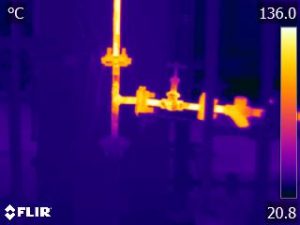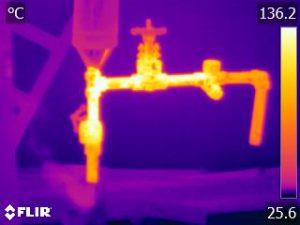


CAss of Steam Traps
The purpose of a steam trap is not as the name may indicate to trap he steam, but rather to trap condensation in a steam line.
There are three major types of Steam Traps, Mechanical Steam Traps, Thermodynamic Steam Traps & Thermostatic Steam Traps. The major faults of steam traps includes live steam leakages, Steam Locking, Air Binding, Trap Back Pressure, Double Trapping. Group Trapping. The Steam Traps may get stuck or fail when at open condition, & acts as open valve which leads to leaking expensive steam & condensate. Opposite to this situation, when the steam traps stuck or fail in closed condition or if clogged, it doesn’t allow the steam and condensate to pass through it and acts as a closed valve.
Whether a steam trap fails open or fails to closed, or clogged, it does equal damage to the steam system and therefore, in such conditions, it is necessary to either replace the steam trap or get it repaired immediately to save the further losses. Failure of steam traps is a safety hazard as well. There are many reasons for Steam Trap’s failures which includes, Contaminated Feed Water, Contamination of Condensate, Improper Installation, Wrong Selection, and the major reason is poor maintenance practices.
Whatever the reason of failure may be, it is difficult to detect failed – Opened or Closed (Clogged) Steam Traps from many unless you have proper tools to detect these faulty steam traps. The failed steam traps may remain in system unnoticed for longer time and may cause losses to company, hence, Periodic Condition Assessment of Steam trap is necessary to maintain the steam system.
Our program of Condition Assessment (CAss) of a number of Steam Traps with Thermography & Ultrasound assessment, reveals the faulty Steam Traps which are Open or Clogged.

